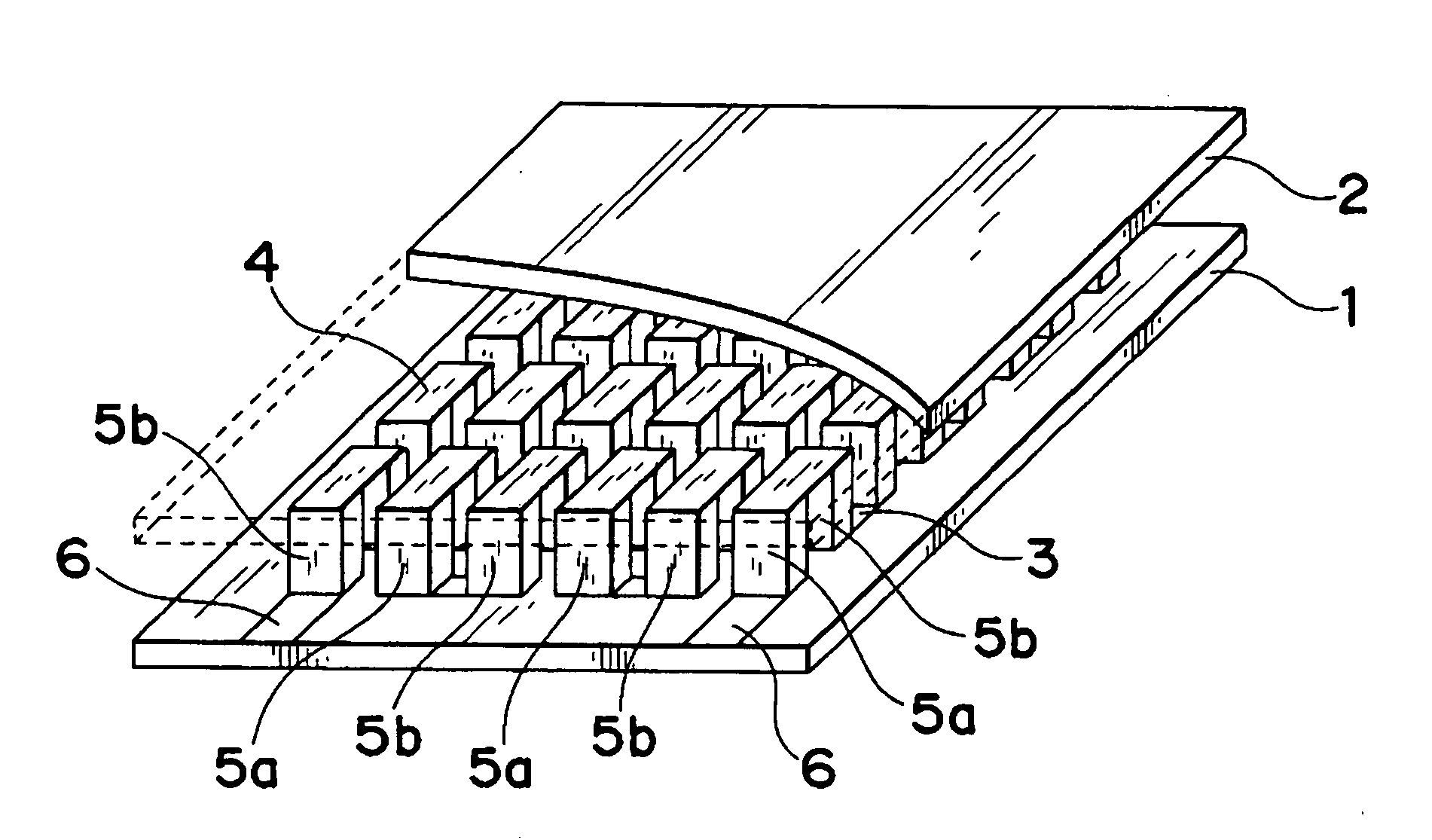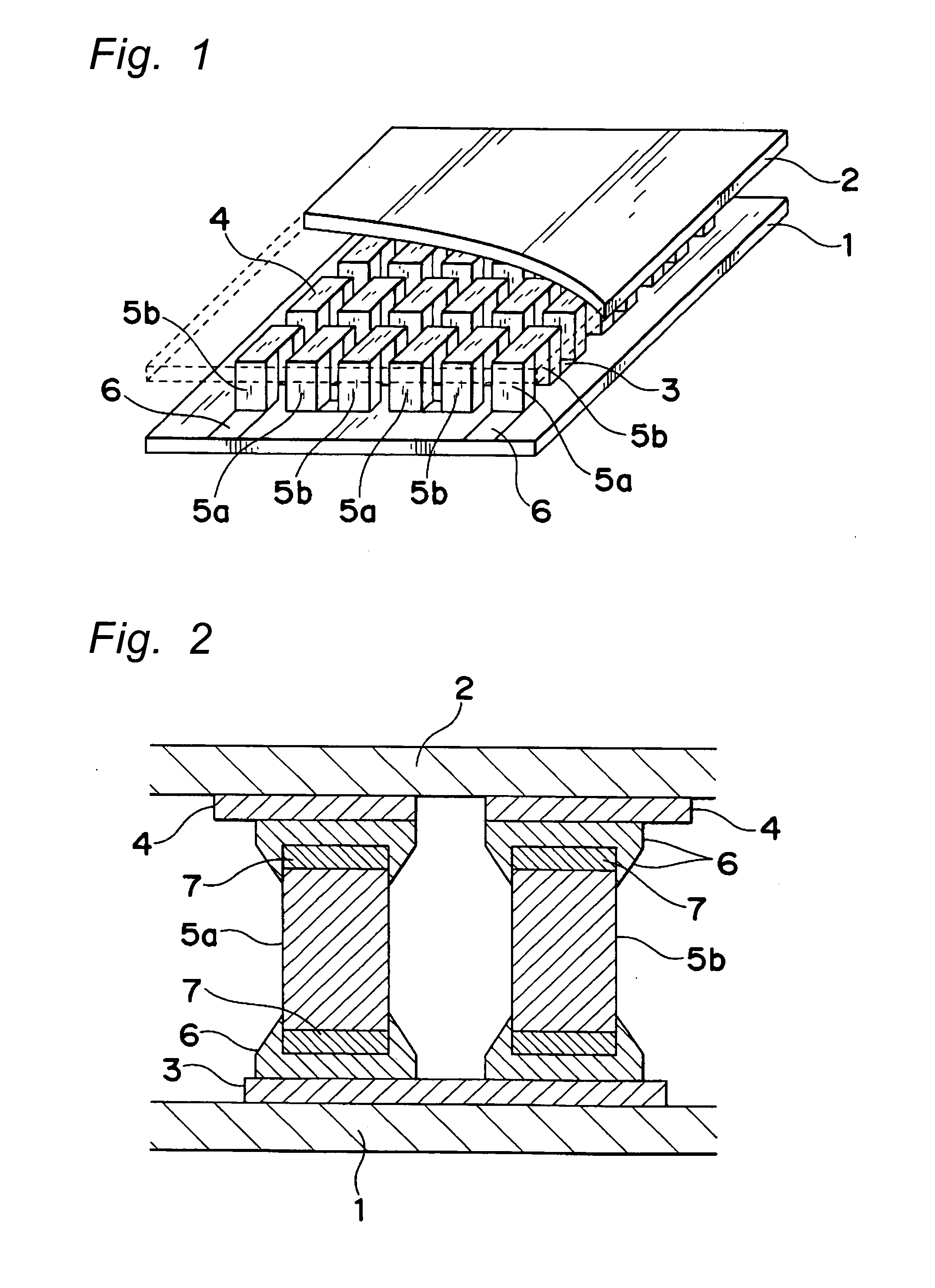Thermoelectric material, thermoelectric element, thermoelectric module and methods for manufacturing the same
a technology of thermoelectric modules and thermoelectric materials, which is applied in the manufacture/treatment of thermoelectric devices, lighting and heating apparatuses, and the operation mode of machines. it can solve the problems of low cooling performance and efficiency, and the n-type thermoelectric material has a lower figure of merit, so as to prevent decomposition or quick growth of grains, reduce the quantity of carbon, and facilitate the effect of heat generation
- Summary
- Abstract
- Description
- Claims
- Application Information
AI Technical Summary
Benefits of technology
Problems solved by technology
Method used
Image
Examples
first embodiment
[0070] The first embodiment of the present invention relates to an N type thermoelectric material that contains bromine and iodine and a method for manufacturing the same, and a thermoelectric element obtained by processing the N type thermoelectric material.
[0071] It is important that the N type thermoelectric material of the first embodiment contains at least one kind of Bi and Sb and at least one kind of Te and Se as main components, and contains bromine (Br) and iodine (I) as dopant for adjusting the carrier concentration.
[0072] The most preferable composite known is (Bi2Te3)0.95(Bi2Se3)0.05 or (Bi2Te3)0.90(Sb2Te3)0.05(Sb2Se3)0.05 having 0.06 to 0.09% by weight of SbI3 added as a dopant.
[0073] The N type thermoelectric material of this type of composition, when at least two kinds selected from among Bi, Sb, Te and Se are contained as main components, makes a thermoelectric material that has high value of figure of merit near the room temperature. Adding Br and I together as t...
second embodiment
[0091] Now a second embodiment of the present invention will be described in detail.
[0092] The second embodiment relates to a directionally solidified thermoelectric crystalline material that contains a boron compound and a method for manufacturing the same, a thermoelectric element obtained by processing the thermoelectric crystalline material and thermoelectric module.
[0093] It is important that the directionally solidified thermoelectric crystalline material of the second embodiment is a thermoelectric crystalline material constituted from uniaxially oriented crystal that contains at least two elements selected from among Bi, Sb, Te and Se as main components, and contains a boron (B) compound.
[0094] The composition of the directionally solidified thermoelectric crystalline material can be made such that has high figure of merit at room temperature, by using at least two elements selected from among Bi, Sb, Te and Se as the main components. In addition, the figure of merit is i...
third embodiment
[0115] It is important that the thermoelectric material according to the third embodiment of the present invention is a dense material that contains at least two elements selected from among a group consisting of Bi, Sb, Te and Se. Such a material has a higher value of figure of merit, and is preferably A2B3 type intermetallic compound, for example a semiconductor crystal where A is substituted by Bi and / or Sb and B is substituted by Te and / or Se, and the ratio B / A is in a range from 1.4 to 1.6, which is preferable for improving the figure of merit at the room temperature.
[0116] As the A2B3 type intermetallic compound, at least one kind of Bi2Te3, Sb2Te3 and Bi2Se3, Bi2Te3-xSex, (x is from 0.05 to 0.25) that is a solid solution of Bi2Te3 and Bi2Se3, or BixSb2-xTe3, (x is from 0.1 to 0.6) that is a solid solution of Bi2Te3 and Sb2Te3 may be used.
[0117] An impurity may be added as a dopant to the intermetallic compound so as to turn it efficiently into a semiconductor. For example, ...
PUM
| Property | Measurement | Unit |
|---|---|---|
| length | aaaaa | aaaaa |
| particle size | aaaaa | aaaaa |
| temperature | aaaaa | aaaaa |
Abstract
Description
Claims
Application Information
 Login to View More
Login to View More - R&D
- Intellectual Property
- Life Sciences
- Materials
- Tech Scout
- Unparalleled Data Quality
- Higher Quality Content
- 60% Fewer Hallucinations
Browse by: Latest US Patents, China's latest patents, Technical Efficacy Thesaurus, Application Domain, Technology Topic, Popular Technical Reports.
© 2025 PatSnap. All rights reserved.Legal|Privacy policy|Modern Slavery Act Transparency Statement|Sitemap|About US| Contact US: help@patsnap.com


